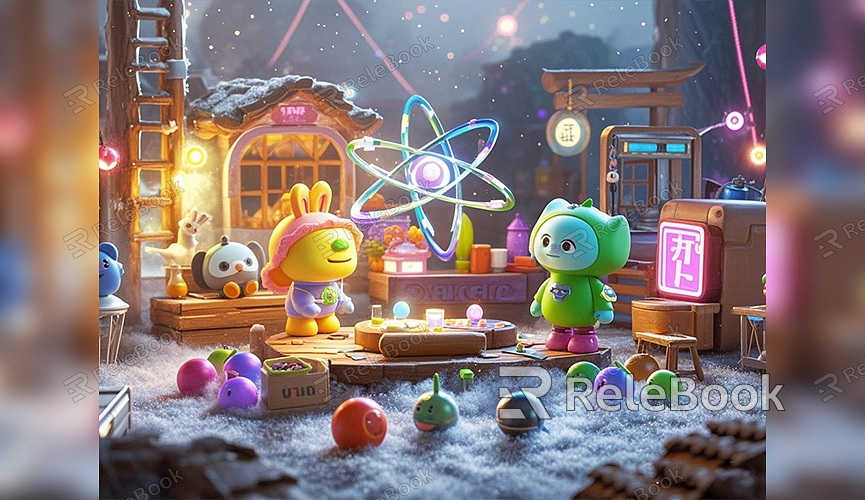How to render with music on blender
Blender is a powerful open-source 3D modeling and rendering software widely used in film, gaming, and animation production. In Blender, you can not only perform detailed 3D rendering but also combine music with animations to create expressive works. This article will explain how to incorporate music into your renders in Blender, enabling you to create creative animated effects.
Why Integrate Music into Blender Renders?

Integrating music into the rendering process of animations offers several advantages:
- Enhance Viewer Experience: The right music can significantly elevate the emotional expression of the animation and immerse the audience more deeply.
- Sync Animation Rhythm: By using the rhythm and beats of the music, you can better control the timing of the animation, making it more dynamic and cohesive.
- Creative Expression: The combination of music and animation provides creators with more room for artistic expression, allowing for unique and personalized works.
Adding Music in Blender
First, you need to import a music file into Blender and synchronize it with your animation. Here are the detailed steps:
1. Import the Music File
- Open Blender: Launch Blender and open the project you want to edit.
- Switch to Video Sequence Editor: In the top menu bar, select the "Video Editing" workspace to switch to Video Sequence Editor mode.
- Import the Music File:
- In the Video Sequence Editor, click the "Add" button and choose "Sound."
- Browse and select the music file you want to add (such as MP3 or WAV), then click "Add Sound."
2. Sync Music with Animation
- Adjust the Audio Track: After importing the music file, you’ll see the audio track appear on the timeline. Drag or adjust the start position and length of the audio track to synchronize the music with the animation.
- Set Animation Keyframes: Based on the rhythm and beats of the music, set keyframes for the animation. You can add keyframes on the timeline to ensure the animation changes align with the music’s rhythm.
- Preview the Effect: Click the "Play" button to preview the synchronization of the animation and music. Make adjustments as needed to ensure the animation matches the music's tempo.
Rendering the Animation with Music
Once you have synchronized the music and animation, the next step is to render your work. Here’s how to do it in Blender:
1. Set Rendering Parameters
- Choose the Rendering Engine: In the right properties panel of Blender, select the "Render" settings. Choose an appropriate rendering engine, such as Eevee or Cycles, and adjust the settings according to your needs.
- Set Output Format:
- In the "Output" panel, choose a suitable video format, such as MP4. Ensure that the "Audio" option is enabled so that audio is included in the render.
- Set the output path to select where you want to save the rendered file.
2. Render the Animation
- Start Rendering: Click the "Render" menu and select "Render Animation." Blender will begin rendering your animation and compositing the music with it.
- Check the Render Results: After rendering is complete, check the final video file to ensure that the synchronization of music and animation meets your expectations.
Practical Tips and Suggestions
When rendering animations with music in Blender, consider the following tips:
- Use High-Quality Music: Choose high-quality audio files to ensure good sound effects. If you need high-quality sound resources, you can download premium 3D textures and HDRIs from [Relebook](https://textures.relebook.com/), which can enhance the expressiveness of your animation.
- Adjust Audio Settings: Use Blender's audio editing features to adjust volume and sound quality during video editing to better blend the music with the animation.
- Utilize Cutting Tools: Use Blender's cutting tools for fine-tuning the music and animation, ensuring every detail aligns with your creative vision.
- Pre-render Testing: Before final rendering, conduct small test renders to confirm the synchronization of music and animation and the overall rendering quality.
Rendering animations with music in Blender can significantly enhance the expressiveness of the animation and the viewer's immersion. By importing music files, synchronizing the music with the animation, and setting the rendering parameters, you can create dynamic and creative works. Utilizing high-quality resources and making fine adjustments can further improve the final outcome.
If you need a variety of high-quality 3D textures and HDRIs for your models and virtual scenes, you can download them for free from [Relebook](https://textures.relebook.com/). For exquisite 3D models, you can also visit [Relebook](https://3dmodels.relebook.com/) to access a wealth of premium resources to support your creative and rendering efforts.

